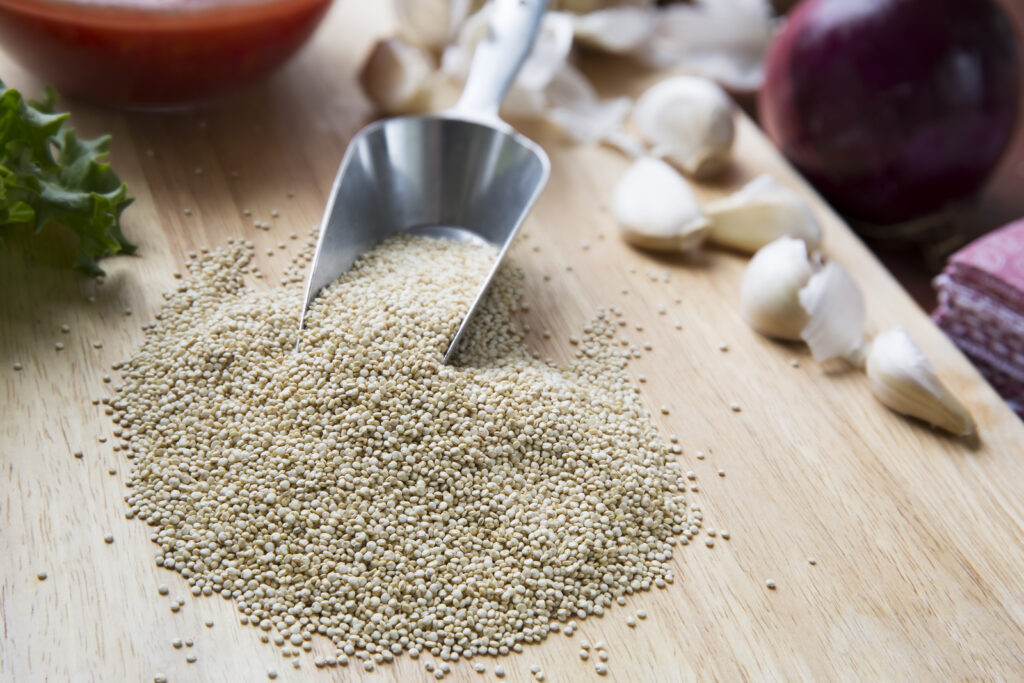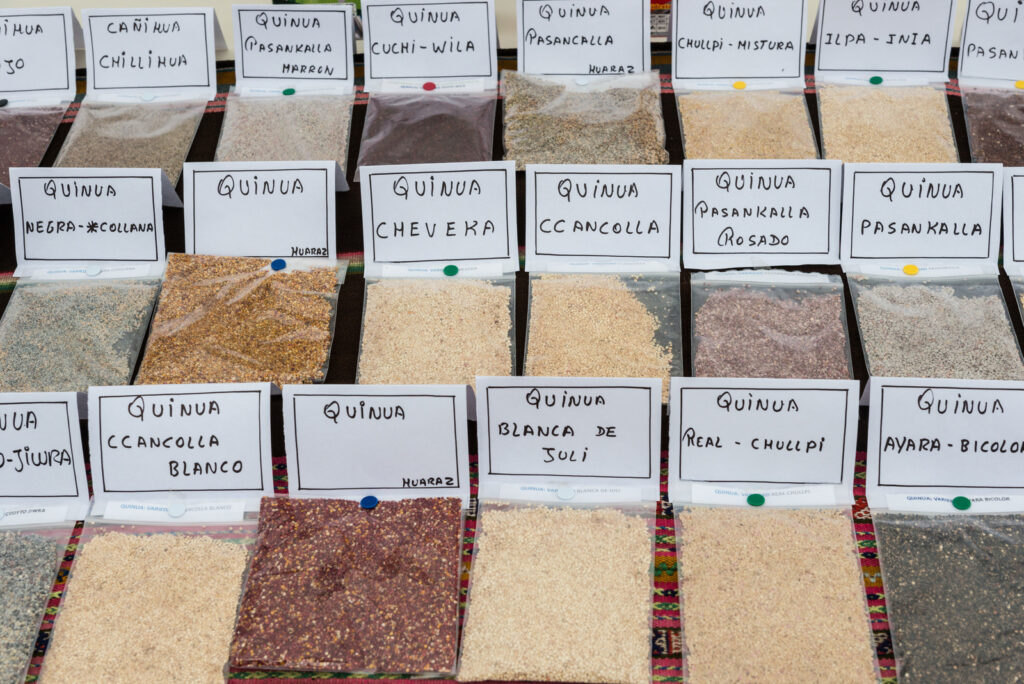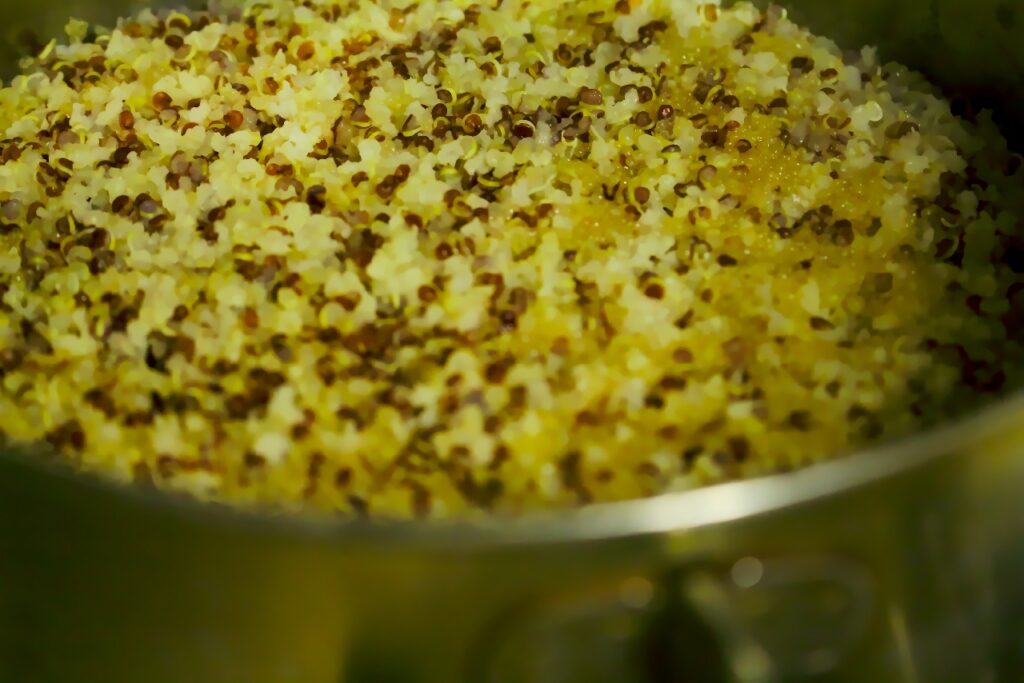Health Benefits And Nutrition Facts Of Quinoa

Quinoa has become a popular food item in recent years due to its many health benefits. This blog post will cover what quinoa is, its nutritional value, the different types of quinoa, and the health benefits of quinoa. We will also touch on some of the possible side effects of quinoa and how to cook it. By the end of this post, you should have a good understanding of quinoa and its benefits.

Nutritional Facts Of Quinoa
Quinoa is a seed that is related to the spinach, Swiss chard, and beet family. Quinoa is a good source of protein, dietary fiber, and B vitamins. It also contains iron, magnesium, phosphorus, potassium, copper, and manganese. Quinoa can be white, red, or black in color. Health benefits include weight loss, improved blood sugar control, lower cholesterol level, reducing inflammation, and improving heart health.
According to the nutrition facts, 1 cup of cooked quinoa amounts to:
- 222 calories
- 39 grams (g) carbs
- 8 g protein
- 4 g fat
- 5 g fiber
- 2 g sugar
Different Types Of Quinoa
Quinoa is a type of grain that is commonly used as a food for humans and animals. It is a complete protein, meaning it contains all the essential amino acids that are needed by the body and contains dietary fiber, antioxidants, and vitamins.
There are several different types of quinoa: white quinoa, red quinoa, black quinoa, and steel cut oats. Each type of quinoa has its own unique flavor and nutritional benefits. Here are some key points about each type of quinoa:

Types of Quinoa
-White Quinoa: White quinoa is light brown in color and has a slightly chewy texture. It has a mild flavor and can be cooked in many different ways, including in soups or salads, as well as on its own as an appetizer or side dish.
-Red Quinoa: Red quinoa is scarlet in color and has a firmer texture than white quinoa. It has a deeper flavor than white quinoa and can be cooked similarly to rice or other grains, such as pasta or risotto. It’s also popular among vegetarians because it provides them with the same level of protein found in meat products without the animal fat content.
-Black Quinoa: Black quinoa is very dark green in color with a bumpy surface reminiscent of couscous grains. This type of quinoa takes longer to cook than other varieties, so be sure to follow the package directions carefully when preparing it for consumption. It has a sweet taste but no distinctive flavor profile compared to other types of quinoa.
-Steel Cut Oats: Steel cut oats are simply whole oat groats that have been chopped into small pieces rather than having their outer hull removed like regular old fashioned oats do. They cook quickly, so they’re great for quick breakfasts like porridge or overnight oatmeal, but they also hold their shape well, so they make great baked goods too – especially cookies!
Health Benefits Of Quinoa
If you’re looking for a high-quality protein and fiber source, quinoa may be the perfect choice. Quinoa is gluten-free, has a variety of health benefits, and can be cooked in many ways.
Quinoa is a nutritious grain that can play a role in promoting overall good health. It is high in fiber, protein, and antioxidants, which can improve overall well-being. Additionally, quinoa has been shown to help with weight loss, diabetes management, and heart disease prevention. Quinoa is also versatile enough to be used in many different recipes, making it an attractive option for those interested in healthy eating options.
Side Effects Of Quinoa
Before consuming quinoa it is important to consider potential side effects such as gas and bloating. Additionally, saponins found in quinoa may cause skin irritation in some people.
Stomach pain, gas, and bloating are all potential side effects of quinoa. If you experience any of these symptoms after eating quinoa, it’s best to speak with your doctor about whether or not it’s safe for you to eat this seed. Additionally, quinoa should only be eaten cooked; uncooked quinoa can cause stomach problems in some people who are allergic to the seed.

Since quinoa is a seed, it can also have negative effects on your digestive system. Quinoa is high in insoluble fiber, which can cause constipation and other digestive problems in some people. Additionally, quinoa contains saponins, chemical compounds that can irritate the gut lining. For these reasons, it’s important to pay close attention to the ingredients list when buying quinoa so you don’t accidentally consume any of these potential side effects.
Before incorporating this grain into your diet it would be wise to speak with a healthcare professional if you have any concerns about its potential health benefits or side effects.
How To Cook Quinoa
There are many different ways to cook quinoa and each method yields a unique taste and texture. Boiling is the simplest way to prepare quinoa, but it can take a longer time to cook than other methods. Quinoa is best when it is cooked until it is fully soft, so boiling may not be the best option if you want your quinoa to be fluffy. Frying is a good option if you want your quinoa to have a crispy outer layer that will hold up during baking.

To cook quinoa:
1) Rinse the quinoa before cooking it to get rid of any bitterness.
2) Bring two cups of water to a boil for every one cup of quinoa.
3) After the water boils, reduce the heat to low and add the rinsed quinoa.
4) Stir occasionally until all the water has been absorbed – this should take about 15 minutes.
Once the quinoa has been cooked, it should be left to sit for about five minutes before fluffing with a fork. Quinoa can then be served as is or used in dishes such as quinoa pilaf, soups, salads, and stir fries.
Quinoa can also be cooked in many different ways including boiling, frying or baking. Here’s one popular recipe to cook quinoa.
Honey Quinoa Breakfast Bowl
- 1 tablespoon almond butter
- 1/2 tablespoon honey
- ½ teaspoon vanilla
- 1/2 cup milk
- 1/3 cup cooked quinoa
- 1 1/2 tablespoons chia seeds
- pinch of salt

Baking is the easiest method of cooking quinoa, but it can also be the least efficient. Quinoa should only be baked for 10-12 minutes because overcooking will make it tough. Baking with a low temperature (375 degrees Fahrenheit) will help prevent sticking and ensure that the quinoa comes out evenly cooked throughout.
Conclusion
In conclusion, quinoa is a nutritious grain that has many health benefits. It is high in fiber, protein, and antioxidants, which can improve overall well-being. Additionally, quinoa has been shown to help with weight loss, diabetes management, and heart disease prevention. However, before consuming quinoa it is important to consider potential side effects such as gas and bloating. If you experience any negative side effects after eating quinoa, it’s best to speak with your doctor about whether or not it’s safe for you to continue consuming this food.
Now that you know more about quinoa and its potential health benefits, why not try cooking with it? There are many different recipes available online that use quinoa as a main ingredient. Experiment with different ingredients and find a dish that you enjoy!